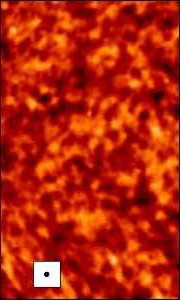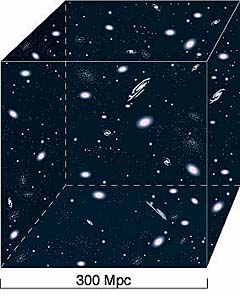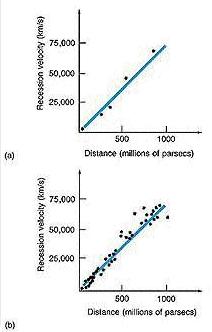|
The Early Universe and Evidence for the Big Bang
- The beginning: After an initial, very hot period of extremely fast expansion (inflation), which left the universe flat and smooth, particles and nuclei (mostly H, 25% He, etc, by 3 min) were formed.
- Decoupling:
At the end of the era of nuclei, when the universe was 300,000 years old and cooled to 3000 K, matter formed atoms and no longer affected photons (more energetic photons, like UV, would be absorbed by atoms, but there were not many such photons); The universe became transparent to light and matter could form the first gas clouds, that eventually led to galaxies by 1 Gyr.
- Result/prediction: That light is still around, but very redshifted, as microwaves.
- Do we have evidence? The 3 K cosmic microwave background, discovered in 1965 by Penzias and Wilson; The same in all directions, except for a blue/redshift in one direction, and small hotter patches, first detected in 1992.
|

|


![]()